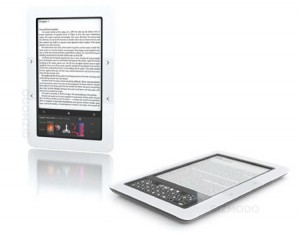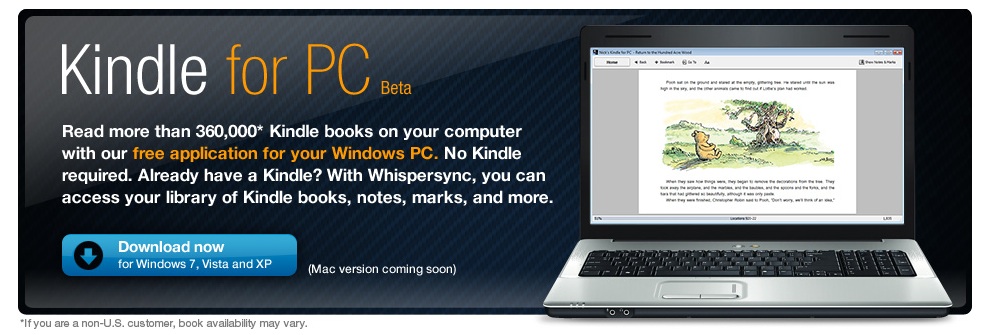Unfortunately, we, the salivating public, might be afflicted with a little holiday disease of our own: Sucker Syndrome. Every one of the Nook’s vaunted distinctions comes fraught with buzz kill footnotes.
That “color touch screen,” for example, is actually just a horizontal strip beneath the regular Kindle-style gray screen. (In effect, it replaces the Kindle’s clicky thumb keyboard.)
This screen is exclusively for navigation and controls. Sometimes it makes sense; when you’re viewing inch-tall book covers, for example, you can tap to open one.
At other times, the color strip feels completely, awkwardly disconnected from what it’s supposed to control on the big screen above.
Worse, the touch screen is balky and nonresponsive, even for the Nook product manager who demonstrated it for me. The only thing slower than the color strip is the main screen above it. Even though it’s exactly the same E Ink technology that the Kindle and Sony Readers use, the Nook’s screen is achingly slower than the Kindle’s. It takes nearly three seconds to turn a page — three times longer than the Kindle — which is really disruptive if you’re in midsentence.
Often, you tap some button on the color strip — and nothing happens. You wait for the Nook to respond, but there’s no progress bar, no hourglass, no indication that the Nook “heard” you. So you tap again — but now you’ve just triggered a second command that you didn’t want.
It takes four seconds for the Settings panel to open, 18 seconds for the bookstore to appear (over Wi-Fi), and 8 to 15 seconds to open a book or newspaper for the first time, during which you stare at a message that says “Formatting.”
“Over one million titles?” Yes, but well over half of those are junky Google scans of free, obscure, pre-1923 out-of-copyright books, filled with typos. (They’re also available for the Kindle, but Amazon doesn’t even count them).
Fact is, Amazon’s e-book store is still much better. Of the current 175 New York Times best sellers, 12 of them aren’t available for Kindle; 21 are unavailable for the Nook.
Kindle books are less expensive, too. Inkmesh.com studied the top-selling 11,604 books for early November, and found that 74 percent of the time, Amazon offers the lowest-priced e-books (cheaper than B&N or Sony) by an average of 15 percent.
What about the Nook’s built-in Wi-Fi? It’s there, but you get no notification when you’re in a hot spot. And if the hot spot requires a login or welcome screen, you can’t get onto it.
And the “loan e-books to friends?” part? You can’t lend a book unless its publisher has O.K.’ed this feature. And so far, B&N says, only half of its books are available for lending — only one-third of the current best sellers. (A LendMe icon on the B&N Web site lets you know when a book is lendable.) Furthermore, the book is gone from your own Nook during the loan period (a maximum of two weeks). And each book can be lent only once, ever.


